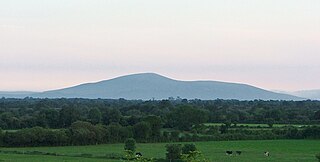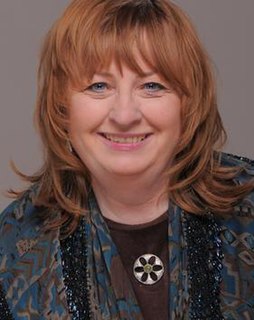
The Dagda is an important god in Irish mythology. One of the Tuatha Dé Danann, the Dagda is portrayed as a father-figure, chieftain, and druid. He is associated with fertility, agriculture, manliness and strength, as well as magic, druidry and wisdom. He is said to have control over life and death, the weather and crops, as well as time and the seasons.

Lughnasadh or Lughnasa is a Gaelic festival marking the beginning of the harvest season. Historically, it was widely observed throughout Ireland, Scotland and the Isle of Man. In Modern Irish it is called Lúnasa, in Scottish Gaelic: Lùnastal, and in Manx: Luanistyn. Traditionally it is held on 1 August, or about halfway between the summer solstice and autumn equinox. However, in recent centuries some of the celebrations shifted to the Sundays nearest this date. Lughnasadh is one of the four Gaelic seasonal festivals, along with Samhain, Imbolc and Beltane. It corresponds to other European harvest festivals such as the Welsh Gŵyl Awst and the English Lammas.
In Irish mythology, Cethlenn, Cethleann was the wife of Balor of the Fomorians and, by him, the mother of Ethniu. She was also a prophetess and warned Balor of his impending defeat by the Tuatha Dé Danann in the second battle of Magh Tuiredh. During that battle she wounded the Dagda.

Brân the Blessed is a giant and king of Britain in Welsh mythology. He appears in several of the Welsh Triads, but his most significant role is in the Second Branch of the Mabinogi, Branwen ferch Llŷr. He is a son of Llŷr and Penarddun, and the brother of Brânwen, Manawydan, Nisien and Efnysien. The name "Brân" in Welsh is usually translated as crow or raven.
Cessair or Cesair is a character from the Lebor Gabála Érenn, a medieval Christian pseudo-history of Ireland. According to the Lebor Gabála, she was the leader of the first inhabitants of Ireland, before the Biblical Flood. The tale may be an attempt to Christianize an earlier pagan myth, but may alternatively be the product of post-conversion pseudohistory.
In Irish mythology, Clíodhna is a Queen of the Banshees of the Tuatha Dé Danann. Clíodna of Carrigcleena is the potent banshee that rules as queen over the sidheog of South Munster, or Desmond.
In Welsh mythology, Olwen is the daughter of the giant Ysbaddaden and cousin of Goreu. She is the heroine of the story Culhwch and Olwen in the Mabinogion. Her father is fated to die if she ever marries, so when Culhwch comes to court her, he is given a series of immensely difficult tasks which he must complete before he can win her hand. With the help of his cousin King Arthur, Culhwch succeeds and the giant dies, allowing Olwen to marry her suitor.

The Blarney Stone is a block of Carboniferous limestone built into the battlements of Blarney Castle, Blarney, about 8 kilometres from Cork, Ireland. According to legend, kissing the stone endows the kisser with the gift of the gab. The stone was set into a tower of the castle in 1446. The castle is a popular tourist site in Ireland, attracting visitors from all over the world to kiss the stone and tour the castle and its gardens.
In Irish, a geas is an idiosyncratic taboo, whether of obligation or prohibition, similar to being under a vow. The plural geasa is also used to mean specifically a spell prohibiting some action, common in Irish folklore and mythology. It is this additional meaning of the plural which the article discusses.

Medb —later forms Meadhbh and Méabh —is queen of Connacht in the Ulster Cycle of Irish mythology. Her husband in the core stories of the cycle is Ailill mac Máta, although she had several husbands before him who were also kings of Connacht. She rules from Cruachan. She is the enemy of Conchobar mac Nessa, king of Ulster, and is best known for starting the Táin Bó Cúailnge to steal Ulster's prize stud bull. Medb is strong-willed, ambitious, cunning and promiscuous, and is an archetypal warrior queen. She is believed to be a manifestation of the sovereignty goddess. Medb of Connacht is probably identical with Medb Lethderg, the sovereignty goddess of Tara, and may also be linked with the Morrígan. She may be the inspiration for the fairy Queen Mab found in William Shakespeare's Romeo and Juliet and other media.

In Breton folklore, a Korrigan ([kɔˈriːɡɑ̃n] is a fairy or dwarf-like spirit. The word korrigan means "small-dwarf". It is closely related to the Cornish word korrik which means gnome. The name changes according to the place. Among the other names, there are korrig, korred, korrs, kores, couril, crion, goric, kornandon, ozigan, nozigan, torrigan, viltañs, poulpikan, paotred ar sabad...
Flidas or Flidais is a female figure in Irish Mythology, known by the epithet Foltchaín. She is believed to have been a goddess of cattle and fertility. In the recent past she has been popularly rendered as a woodland goddess akin to the Greek Artemis and Roman Diana, though scholars now believe this to be incorrect.
In Irish mythology Tír na nÓg or Tír na hÓige is one of the names for the Celtic Otherworld, or perhaps for a part of it. Other Old Irish names for the Otherworld include Tír Tairngire, Tír fo Thuinn, Mag Mell, Ildathach, and Emain Ablach. Similar myths in the northern Celtic cultures include these of Annwn, Fairyland, and Hy Brasil.

Slievenamon or Slievenaman is a mountain with a height of 721 metres (2,365 ft) in County Tipperary, Ireland. It rises from a plain that includes the towns of Fethard, Clonmel and Carrick-on-Suir. The mountain is steeped in folklore and is strongly associated with Fionn mac Cumhaill. On its summit are the remains of ancient burial cairns, which were seen as portals to the Otherworld. Much of its lower slopes are wooded, and formerly most of the mountain was covered in native woodland. A low hill attached to Slievenamon, Carrigmaclear was the site of a battle during the Irish Rebellion of 1798.
Deò-ghrèine or Deò-grèine can refer to the following:
- Fionn mac Cumhaill's famous banner, also known as “Deò-ghrèine Mhic Cumhail” after him.
- Perhaps inspired by MacCumhail's banner, An Deò-gréine was also used as the name of a Scottish Gaelic magazine, the organ of An Comunn Gàidhealach, first produced in 1905, later being retitled An Gàidheal. Its editors included Malcolm Macfarlane (1905-6) and Rev. Malcolm MacLennan (1906-8), best known for his dictionary.
- In James MacPherson’s Ossianic stories, based on Gaelic mythology, but with his own additions, it was also used for “the daughter of Cairbre, and wife of that Cruthgheal who was slain in battle by Swaran, king of Scandinavia, (Lochlann).” Some say that this character originally represented a daughter of the sun, something common in various mythologies. She was held captive in the Land of the Big Women, freed by Cailleach and Brian. This version is possibly also spelled Der Greine or Dia Griene. The story of Dia Greine, the Caillaleach and Brian is also mentioned in "The Encyclopedia of Celtic Mythology and Folklore" By Patricia Monaghan.
- Another Dérgreine sleeps with Laegaibe Mac Crimthann during his visit to Fairyland, story in The Book of Leinster. There is a variation of this legend where she was the daughter of a king, given to the hero Laoghaire Mac Crimthann as a reward for his service to her father in killing the fierce Fianna warrior Goll mac Morna mentioned in "The Encyclopedia of Celtic Mythology and Folklore" By Patricia Monaghan.

Patricia Monaghan was a poet, a writer, a spiritual activist, and an influential figure in the contemporary women's spirituality movement. Monaghan wrote over 20 books on a range of topics including Goddess spirituality, earth spirituality, Celtic mythology, the landscape of Ireland, and techniques of meditation. In 1979, she published the first encyclopedia of female divinities, a book which has remained steadily in print since then and was republished in 2009 in a two volume set as The Encyclopedia of Goddesses and Heroines. She was a mentor to many scholars and writers including biologist Cristina Eisenberg, poet Annie Finch, theologian Charlene Spretnak, and anthropologist Dawn Work-MaKinne, and was the founding member of the Association for the Study of Women and Mythology, which brought together artists, scholars, and researchers of women-centered mythology and Goddess spirituality for the first time in a national academic organization.
Sencha mac Ailella is a character from the Ulster Cycle of Irish mythology. He acts as an important judge and notable poet during the reign of Conchobar mac Nessa. He volunteered to foster Cúchulainn, but was only an educator. Sencha helped establish peace between the Ulstermen.
In Scottish folklore the Ghillie Dhu or Gille Dubh was a solitary male fairy. He was kindly and reticent yet sometimes wild in character but had a gentle devotion to children. Dark haired and clothed in leaves and moss, he lived in a birch wood within the Gairloch and Loch a Druing area of the north-west highlands of Scotland.











